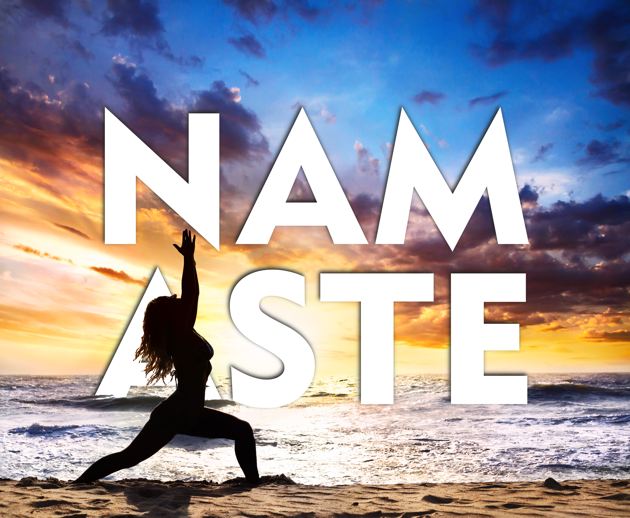Even a raw beginner in yoga class has heard the term “Namaste.” Typically your teacher will either greet you at the entrance to the studio with his or her hands in what we westerners would call prayer position (Anjuli mudra), bow and say, “Namaste.” The respectful response would be to bow and repeat her words and mudra (hand gesture). Have you been wondering what the origin and meaning of “Namaste” could be?
I like to think of Namaste in similar terms as “Aloha”, but of course you may not know the true meaning of this word either. Aloha and Namaste are very similar in usage and meaning. Both are used informally in everyday life, as well as in more formal occasions and in more formal ways. Think of Namaste as the Aloha of India and yoga.
With your hands at your heart and a slight bow, it can be used to say “hello” or “goodbye,” “I hope you are well” and “How’s the family?” “Whaz up?” or “See ya later.” If you raise your hands from your heart to your forehead and bow deeper, it is a very respectful gesture to a teacher, mentor, parent, grandparent or boss.
Aloha is a greeting in which alo means presence and ha means breath of life or essence of life. You may also notice the similarity between ha and prana, which in Sanskrit means breath of life. The interconnectedness of language is a wonderful thing and reminds us of how all life, religion and culture comes from one source.
Namaste is a Sanskrit word that can be interpreted as a combination of two words also, just like the combination of alo and ha for aloha. Namah means bow, reverential salutation or adoration while te means to you. So Namaste can be translated as I bow to you or salutations to you.
A mudra is a sacred hand gesture. The greeting Namaste is combined with Anjali mudra (hands in prayer pose) over either the heart (anahata chakra) or the third eye (forehead). Placing of the hands over the heart indicates the opening of your heart chakra or the offering of your heart to another. Bowing and raising your hands in Anjuli mudra over your forehead (third eye or Ajna chakra) is an even greater sign of respect. Ajna chakra traditionally is noted as the place where the balance of our higher and lower selves occurs and is the seat of our insight.
In essence Namaste is a beautiful way to greet anyone, whether in coming or going. There are many ways to translate Namaste but no matter how you want to think of it, use it often and remember it’s meaning each time you do!
Here are two of my favorite translations:
- The soul within me, bows to the soul within you.
- I honor the place in you in which the entire Universe dwells, I honor the place in you which is of Love, of Integrity, of Wisdom and of Peace. When you are in that place in you, and I am in that place in me, we are One.
Aloha and Namaste!


